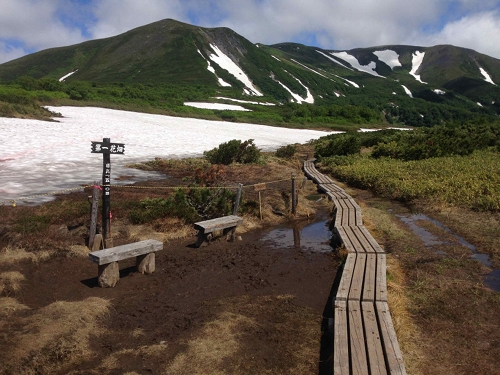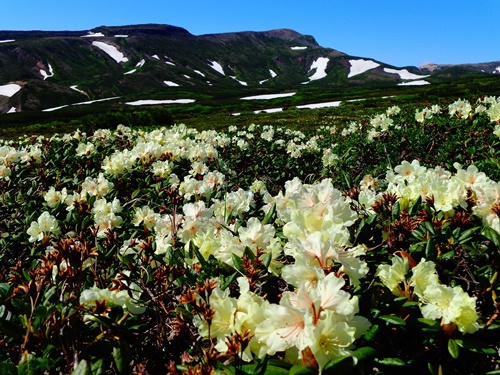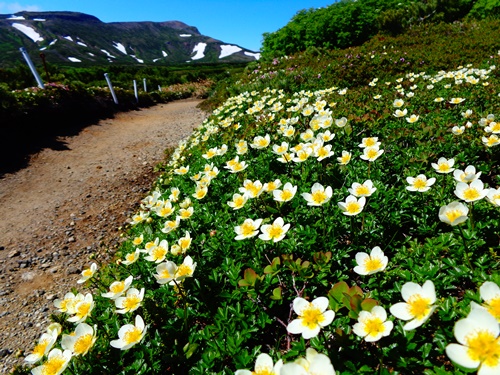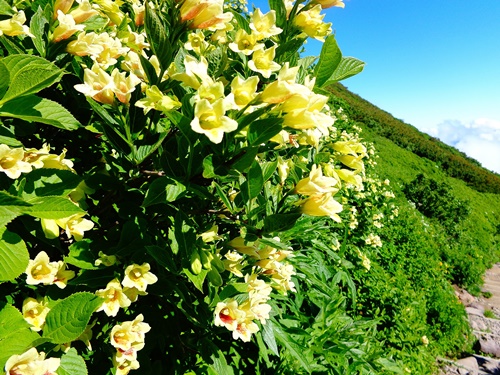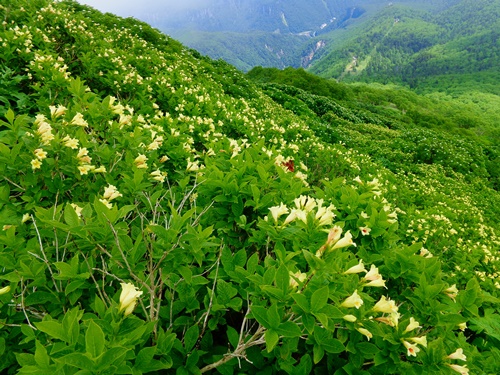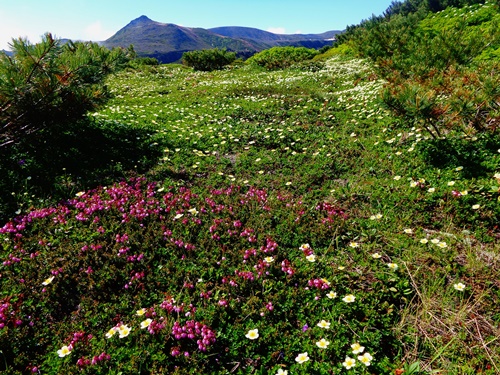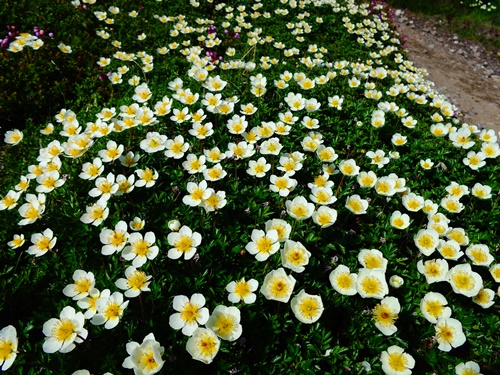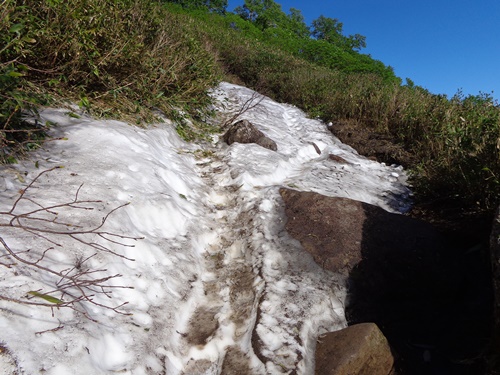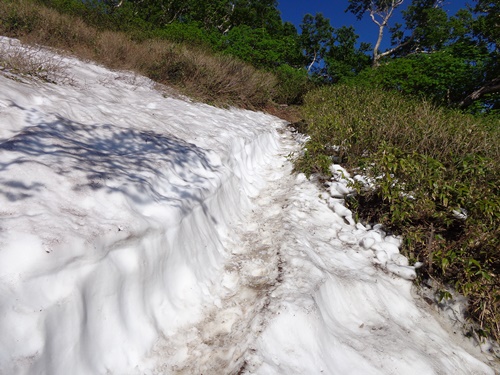A lot of snow has melted at Mt. Midori’s Daiichi Hanabatake over the past week. There is a
snow-covered slope of about 150 meters below the corridor linking it with Daini Hanabatake;
however, the boardwalk is exposed and easy to walk on in all other areas. Water is flowing on the
trail in the corridor with Daini Hanabatake and creating snow bridges. Consequently, climbers
should be wary of the danger of punching through the snow’s surface for the next few days.
Photo: Daiichi Hanabatake, Mt. Midori Jul. 5
snow-covered slope of about 150 meters below the corridor linking it with Daini Hanabatake;
however, the boardwalk is exposed and easy to walk on in all other areas. Water is flowing on the
trail in the corridor with Daini Hanabatake and creating snow bridges. Consequently, climbers
should be wary of the danger of punching through the snow’s surface for the next few days.
Photo: Daiichi Hanabatake, Mt. Midori Jul. 5
